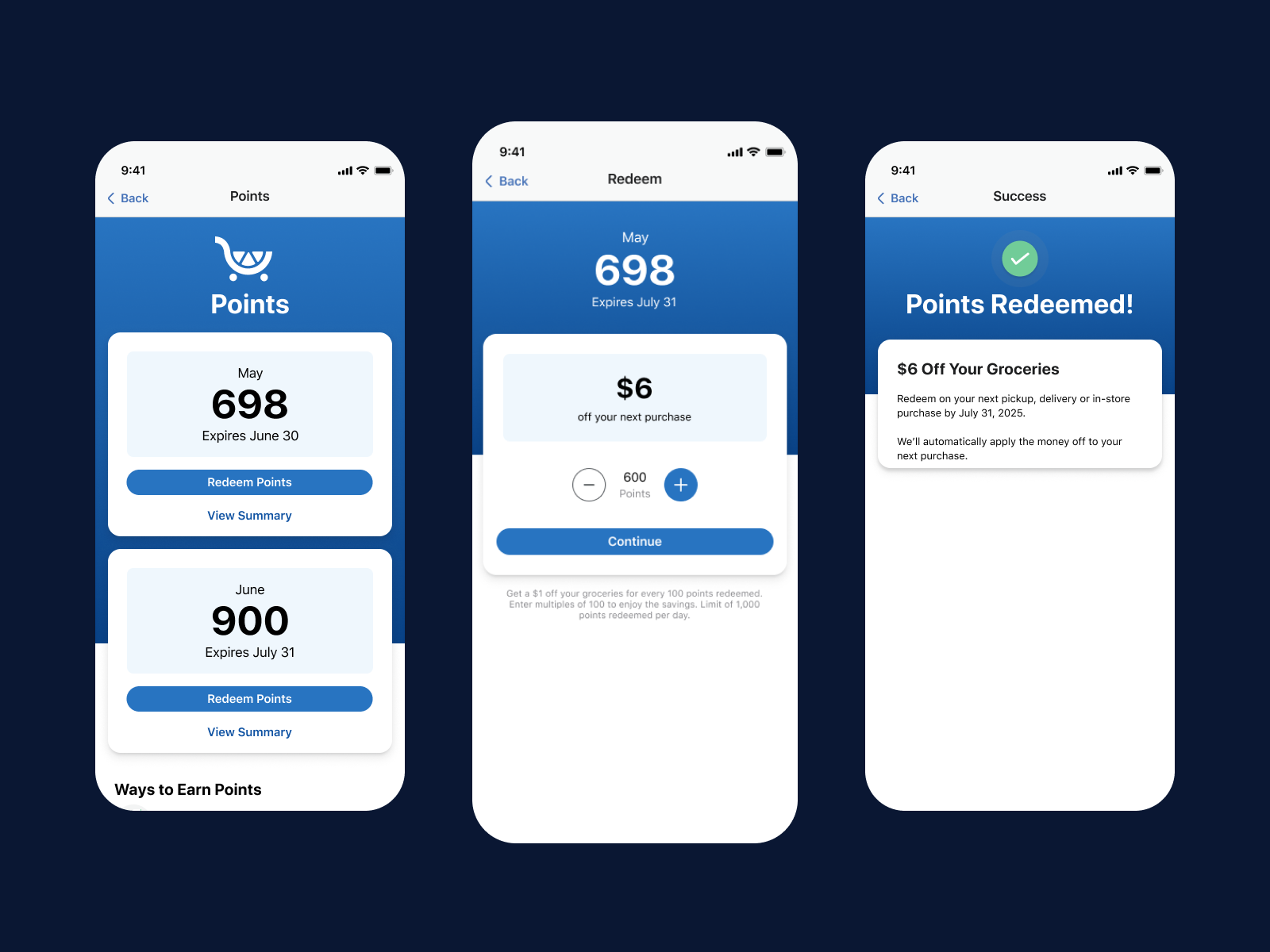Kroger Plus 2.0: Expanding Points Redemption Beyond Fuel
Redesigned Kroger’s loyalty to let shoppers redeem points for money off groceries, broadening value beyond fuel and laying groundwork for flexible redemption.
📈 25% adoption among storeless households
🔁 85% repeat redemption month-over-month
🚀 50% conversion lift for “Qualified Non-Redeemers” (vs. 10% forecast)
THE PROBLEM
While Fuel Points offered savings at the pump, the program didn’t offer relevant value to many of Kroger’s most loyal and high-spending shoppers. For growing segments of shoppers like EV drivers and city dwellers, fuel rewards simply didn’t match how they shopped or lived. That limitation created a disconnect between what the business offered and what customers actually found useful. As a result, many households with active loyalty accounts still weren’t redeeming their rewards.
At the same time, customer expectations around loyalty had matured. Entering a phone number to unlock personalized perks had become the norm — whether earning points on a credit card, redeeming offers at a fast food counter, or saving at a grocery checkout. What once felt like a bonus now felt like a baseline. In exchange for their trust, data, and spending, customers expected rewards that were flexible, instant, and clearly tied to how much they mattered to the brand.
THE SOLUTION
To stay competitive and meet rising expectations, Kroger needed to modernize its loyalty experience to make points feel usable, valuable, and aligned with how people actually shop.
We launched Kroger Plus 2.0, introducing point-to-cash redemption as a foundational step toward a flexible rewards model. This MVP marked a strategic move in transforming Kroger’s loyalty program into a system that could grow with evolving customer needs. The goal was to help customers save on everyday groceries while building the infrastructure to eventually support both earning and redemption across more categories and experiences.
MY ROLE
UX Research & Product Design – I partnered with product, research, and UI design to shape the point-to-cash redemption experience. I led qualitative testing, insight synthesis, and concept evaluation to guide MVP planning. I also explored future-state opportunities for flexible redemption across the broader loyalty ecosystem.
Tools Used: Figma, Mural, Dovetail, Userzoom
Fuel Points as a Foundation
Kroger’s Fuel Points program launched in the late 1990s to reward shoppers with savings at the pump. Over time, it became a familiar part of the Kroger loyalty experience — especially for fuel-focused customers. Some shoppers even optimized their savings by purchasing gift cards during 4x Fuel Points events, stacking rewards with credit card perks and fuel discounts.
This behavior underscored just how important Fuel Points were to a subset of customers — but it also revealed the program’s limits. Points were only useful if you drove, shopped a certain way, or lived near a participating station. As delivery became more common and electric vehicles gained traction, large segments of customers were left without meaningful ways to use their points.
Meanwhile, loyalty engagement remained high. 93% of sales were tied to Kroger Plus accounts, showing that customers were still willing to exchange their data and behaviors for value. But they weren’t seeing the full benefit. Over half of qualified households weren’t redeeming their points each month, even though 88% were aware of them.


